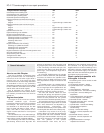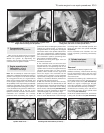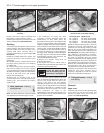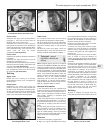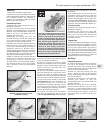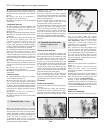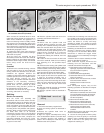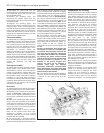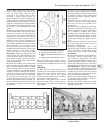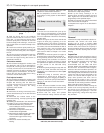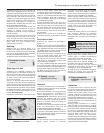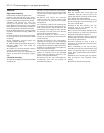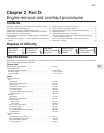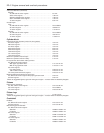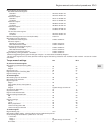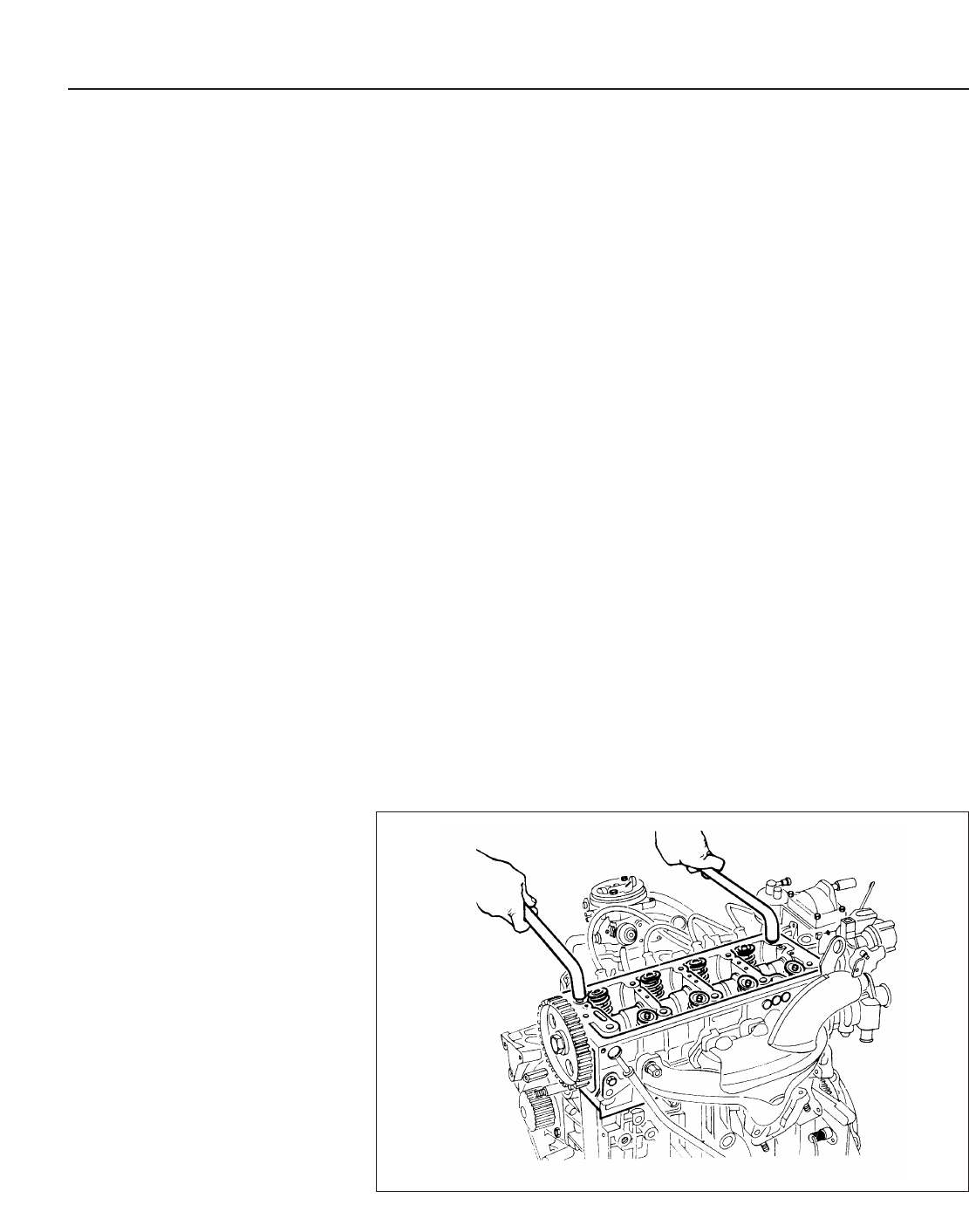
12 Disengage the timing belt from the
camshaft sprocket, and position the belt clear
of the sprocket. Ensure that the belt is not
bent or twisted sharply.
13 Slacken the retaining clips, and
disconnect the coolant hoses from the
thermostat housing (on the left-hand end of
the cylinder head).
14 Depress the retaining clip(s), and
disconnect the wiring connector(s) from the
electrical switch and/or sensor(s) which are
screwed into the thermostat housing/cylinder
head (as appropriate). Also where necessary
release the TDC sensor connector from its
support on the distributor bracket on the left-
hand end of the cylinder head.
Carburettor models
15 Disconnect the LT wiring connectors from
the distributor and HT coil. Release the TDC
sensor wiring connector from the side of the
coil mounting bracket, and disconnect the
vacuum pipe from the distributor vacuum
diaphragm unit. If the cylinder head is to be
dismantled for overhaul, remove the
distributor and ignition HT coil as described in
Chapter 5B. If the cylinder numbers are not
already marked on the HT leads, number each
lead, to avoid the possibility of the leads being
incorrectly connected on refitting. Disconnect
the HT leads from the spark plugs, and
remove the distributor cap and lead
assembly.
Fuel-injected models
16 Disconnect the wiring connector from the
ignition module. If the cylinder head is to be
dismantled for overhaul, remove the ignition
module as described in Chapter 5B. If the
cylinder numbers are not already marked on
the HT leads, number each lead, to avoid the
possibility of the leads being incorrectly
connected on refitting. Note that the HT leads
should be disconnected from the spark plugs
instead of the coil, and the coil and leads
removed as an assembly.
All models
17 Slacken and remove the bolt securing the
engine oil dipstick tube to the cylinder head.
18 Working in the reverse of the sequence
shown in illustration 11.38, progressively
slacken the ten cylinder head bolts by half a
turn at a time, until all bolts can be unscrewed
by hand.
19 With all the cylinder head bolts removed,
lift the rocker arm assembly off the cylinder
head. Note the locating pins which are fitted
to the base of each rocker arm pedestal. If
any pin is a loose fit in the head or pedestal,
remove it for safe-keeping.
20 On engines with a cast-iron cylinder
block, lift the cylinder head away; seek
assistance if possible, as it is a heavy
assembly, especially if it is being removed
complete with the manifolds.
21 On engines with an aluminium cylinder
block, the joint between the cylinder head and
gasket and the cylinder block/crankcase must
now be broken without disturbing the wet
liners. To break the joint, obtain two L-shaped
metal bars which fit into the cylinder head bolt
holes. Gently “rock” the cylinder head free
towards the front of the car (see illustration).
Do not try to swivel the head on the cylinder
block/crankcase; it is located by dowels, as
well as by the tops of the liners. Note: If care
is not taken and the liners are moved, there is
also a possibility of the bottom seals being
disturbed, causing leakage after refitting the
head. When the joint is broken, lift the cylinder
head away; seek assistance if possible, as it is
a heavy assembly, especially if it is being
removed complete with the manifolds.
22 On all models, remove the gasket from
the top of the block, noting the two locating
dowels. If the locating dowels are a loose fit,
remove them and store them with the head for
safe-keeping. Do not discard the gasket - on
some models it will be needed for
identification purposes (see paragraphs 28
and 29).
Caution: On aluminium block engines, Do
not attempt to rotate the crankshaft with
the cylinder head removed, otherwise the
wet liners may be displaced. Operations
that require the rotation of the crankshaft
(eg cleaning the piston crowns), should
only be carried out once the cylinder liners
are firmly clamped in position. In the
absence of the special Peugeot liner
clamps, the liners can be clamped in
position using large flat washers
positioned underneath suitable-length
bolts. Alternatively, the original head bolts
could be temporarily refitted, with suitable
spacers fitted to their shanks.
23 If the cylinder head is to be dismantled for
overhaul, remove the camshaft as described
in Section 10, then refer to Part D of this
Chapter.
Preparation for refitting
24 The mating faces of the cylinder head and
cylinder block/crankcase must be perfectly
clean before refitting the head. Use a hard
plastic or wood scraper to remove all traces of
gasket and carbon; also clean the piston
crowns. Refer to paragraph 23 before turning
the crankshaft on aluminium block engines.
Take particular care during the cleaning
operations, as aluminium alloy is easily
damaged. Also, make sure that the carbon is
not allowed to enter the oil and water
passages - this is particularly important for the
lubrication system, as carbon could block the
oil supply to the engine’s components. Using
adhesive tape and paper, seal the water, oil
and bolt holes in the cylinder
block/crankcase. To prevent carbon entering
the gap between the pistons and bores,
smear a little grease in the gap. After cleaning
each piston, use a small brush to remove all
traces of grease and carbon from the gap,
then wipe away the remainder with a clean
rag. Clean all the pistons in the same way.
25 Check the mating surfaces of the cylinder
block/crankcase and the cylinder head for
nicks, deep scratches and other damage. If
slight, they may be removed carefully with a
file, but if excessive, machining may be the
only alternative to renewal.
26 If warpage of the cylinder head gasket
surface is suspected, use a straight-edge to
check it for distortion. Refer to Part D of this
Chapter if necessary.
27 When purchasing a new cylinder head
gasket, it is essential that a gasket of the
correct thickness is obtained. On some
models only one thickness of gasket is
available, so this is not a problem. However
on other models, there are two different
thicknesses available - the standard gasket
2C•10 TU series engine in-car repair procedures
11.21 Using two angled metal rods to free the cylinder head from the block



